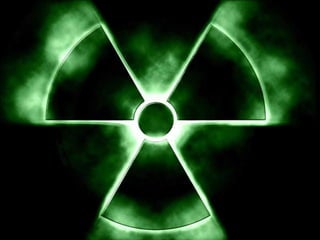
Toxicity (mechanism)
- 6. By: Julius Martonia Manolong
- 7. INTRODUCTION ₰ Toxicant (Poison) – any agent capable of producing a deleterious response in a biological system – ”Foreign” Chemicals or Xenobiotics – Air we breathe, water we drink and food we eat.
- 9. ADME Absorption Distribution Metabolism Excretion
- 11. Disposition of Xenobiotics Ingesti on Inhal ation Intravenous Intraperitoneal Subcutaneous absorption Gastrointestinal Lung Intramuscular tract Der mal Liver Blood and lymph Bile extracellular f at f luid distribution body Kidney Lung Secretory organs Structures soft tissue bone Bladder Alveoli excretion f eces Urine Expired Air Secretions 11
- 12. ADME: ABSORPTION ₰ ability of a chemical to enter the blood (blood is in equilibrium with tissues) ₰ Rate the following processes in order of fastest to slowest: ORAL INTRAVENOUS INHALATION DERMAL EXPOSURE.
- 13. INGESTION/ORAL • Most xenobiotics move through the lining of the gastrointestinal tract – Diffusion or carrier-mediated transport
- 14. Factors Affecting GI • Disintegration of dosage form and dissolution of particles • Chemical stability of chemical in gastric and intestinal juices and enzymes • Rate of gastric emptying • Motility and mixing in GI tract • Presence and type of food
- 15. INHALATION: • For gases, vapors and volatile liquids, aerosols and particles • In general: large surface area, thin barrier, high blood flow rapid absorption • Blood:air partition coefficient – influence of respiratory rate and blood flow
- 16. Airway anatomy bronchial tree trachea • diffusion distance: ~20 mm • total exchange gas exchange area: ~80 m2 16
- 17. Absorption Area in the Respiratory System Nasopharynge 5-30 µm Trachea Bronchi Bronchioles 1-5 µm Alveolar Region 1 µm 17
- 18. DERMAL • Must cross several cell layers (stratum corneum, epidermis, dermis) to reach blood vessels. • Factors important here are: lipid solubility hydration of skin site (e.g. sole of feet vs. scrotum)
- 19. INTRAVENOUS • Intraperitoneal -large surface area, vascularized, first pass effect. • Intramuscular, subcutaneous, intradermal: -absorption through endothelial pores into the circulation; blood flow is most important + other factors
- 20. ADME: DISTRIBUTION ₰ the process in which a chemical agent translocates throughout the body. • Blood carries the agent to and from its site of action, storage depots, organs of transformation, and organs of elimination
- 21. • Rate of distribution (rapid) dependent upon – blood flow – characteristics of toxicant (affinity for the tissue, and the partition coefficient) • Distribution may change over time
- 22. Storage and Binding Sites: • Storage in Adipose tissue-very lipophylic compounds (DDT) will store in fat. Rapid mobilization of the fat (starvation) can rapidly increase blood concentration • Storage in Bone--Chemicals analogous to Calcium-- Fluoride, Lead, Strontium • Binding to Plasma proteins--can displace endogenous compounds. Only free is available for adverse effects or excretion
- 23. ADME: METABOLISM • Also called as Biotransformation • The process by which the administered chemical (parent compounds) are modified by the organism by enzymatic reactions. • Bioactivation--Biotransformation can result in the formation of reactive metabolites
- 24. • 1o objective--make chemical agents more water soluble and easier to excrete – decrease lipid solubility --> decrease amount at target – increase ionization --> increase excretion rate --> decrease toxicity
- 25. ₰ Occurs in liver and to some extent to; *Kidney *skin *placenta and *other organs ₰ Can have several consequences Microsomal enzyme system (MES)- a hepatic enzyme that is inducible and performs a role in biotransformation. Ex…
- 26. Hepatic biotransformation mechanisms can be maladaptive. -”toxify” rather than “detoxify” Ex: Cigarette smoke--Carcinogen MEs evolved not to defend against the foreign chemicals but rather to metabolize endogenous substances. -Inhibitors
- 27. ADME: EXCRETION • Toxicants are eliminated from the body by several routes – Filtered thru renal corspuscle – secreted across the tubular epithelium in order to appear in urine
- 28. – Glomerular filtration- bulk flow process so that low-molecular-weight substances in plasma undergo filtration. – There is filtration of foreign chemicals except those bound to plasma proteins or RBCS.
- 29. • Urinary excretion – water soluble products are filtered out of the blood by the kidney and excreted into the urine • Exhalation – Volatile compounds are exhaled by breathing • Biliary Excretion via Fecal Excretion – Compounds can be extracted by the liver and excreted into the bile. The bile drains into the small intestine and is eliminated in the feces. • Milk Sweat Saliva
- 30. EFFECTS
